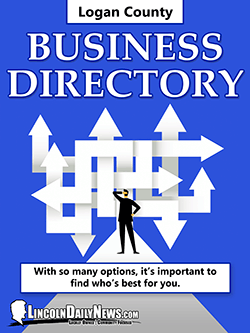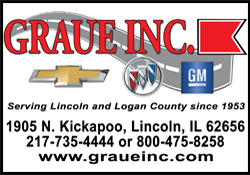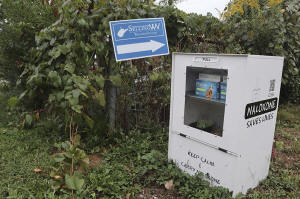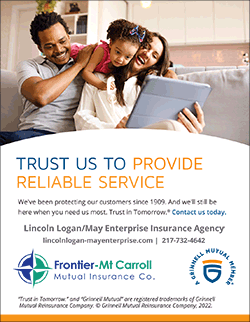Get your Narcan! Old newspaper boxes are being used to distribute
overdose reversal drug
 Send a link to a friend
Send a link to a friend
 [September 26, 2024]
By LEAH WILLINGHAM [September 26, 2024]
By LEAH WILLINGHAM
CHARLESTON, W.Va. (AP) — For decades, Jeff Card's family company was
known for manufacturing the once ubiquitous tin boxes where people could
buy newspapers on the street.
Today, reach into one of his containers and you may find something
entirely different and free of charge: Naloxone, the opioid overdose
reversal drug.
Naloxone distribution containers have been proliferating across the
country in the more than a year since the U.S. Food and Drug
Administration approved its sale without a prescription. Naloxone, a
nasal spray most commonly known as Narcan, is used as an emergency
treatment to reverse drug overdoses.
Such boxes — appearing in neighborhoods, in front of hospitals, health
departments and convenience stores — are one way those supporting people
with substance use disorder have sought to make Narcan, which can cost
around $50 over the counter, accessible to those who need it most. Not
unlike little free libraries that distribute books to anyone who wants
one, the metal boxes used formerly as newspaper receptacles aren’t
locked and don’t require payment. People can take as much as they think
they need.
Advocates say the containers help normalize the medication — and are
evidence of steadily reducing stigma around its use.

Sixty Narcan receptacles were distributed across 35 states in honor of
Thursday's “Save a Life Day” — a naloxone distribution and education
event started by a West Virginia nonprofit in 2020. Containers were
purchased from Card's Texas-based Mechanism Exchange & Repair, which
still serves newspaper customers but has expanded to manufacturing other
products amid the newspaper industry's decline.
“It’s fortunate and unfortunate,” said Card, who started making the
Narcan containers over two years ago. "Fortunate for us that we’ve got
something to build, but unfortunate that this is what we have to build,
given how bad the drug problem is in America.”

Opioid deaths were already at record levels before the coronavirus
pandemic, but they skyrocketed when it hit in early 2020. The U.S.
Centers for Disease Control and Prevention estimated there were about
85,000 opioid-related deaths in the 12 months that ended in April 2023.
But since then, they fell. The CDC estimate for the 12 months that ended
in April 2024 was 75,000 -- still higher than any point before the
pandemic.
The reasons for the decline are not fully understood. But it does
coincide with Narcan, a medication that’s been hard to get in some
communities, becoming available over the counter, as well as with the
ramping up of spending of funds from legal settlements between
governments and drugmakers, wholesalers and pharmacies.
The U.S. Food and Drug Administration approved use of Narcan to treat
overdoses back in 1971, but its use was confined to paramedics and
hospitals for decades. Narcan nasal spray was first approved by the FDA
in 2015 as a prescription drug, and in March, it was approved for
over-the-counter sales and started being available last September at
major pharmacies.
“That took the barriers away. And that’s when we realized, ‘OK, now we
need to increase access. How can we get naloxone into the communities?’”
said Caroline Wilson, a West Virginia social worker and person in
recovery who coordinated this year's Save a Life Day.
[to top of second column]
|

A new naloxone distribution box sits in a residential neighborhood
in Hurricane, W.Va. on Tuesday, Sept. 24, 2024. (AP Photo/Leah
Willingham)
 Last year, all 13 states in
Appalachia participated in the day spearheaded by West Virginia
nonprofit Solutions Oriented Addiction Response. Community
organizations in hundreds of counties table in parking lots, outside
churches and clinics handing out Narcan and fentanyl test strips and
training people on how to use it. They also work to educate the
public on myths surrounding the medication, including that it's
unsafe to have in easily accessible places. Narcan has no effect on
people who use it without opioids in their system.
This year, with the effort expanding to 35 states
and a theme of “naloxone everywhere”, the group sent out 2,000
emergency kits containing one Narcan dose to be placed in locations
like convenience store bathrooms or parks. The 60 tin newspaper
boxes — which sell for around $350 apiece — were purchased with
grants.
Aonya Kendrick Barnett's harm reduction coalition Safe Streets
Wichita installed one of the Kansas' first Narcan receptacles —
which she refers to as “nalox-boxes” — in February. The boxes, now
sold by a few different companies, can look different, too. Some
look like newspaper boxes, while others look like vending machines.
Since installing a vending machine Narcan container — which just
requires a zip code be entered on the keypad to access the
medication — it's distributed around 2,600 packages a month.
“To say, ‘Hey, we have a 24-hour vending machine, come over here and
come get what you need — no judgment,’ is so bold in this Bible belt
state and it’s helping me break down the the stigma," she said.
Kendrick Barnett said there's no place for judgment when it comes to
what she calls live-saving health care: “People are going to use
drugs. It’s not our job to condemn or condone it. It’s our job to
make sure that they have the necessary health care that they need to
survive.”
The Save a Life Day box her organization received is going to go in
front of their new clinic, scheduled to open in October.
In Eerie, Pennsylvania, 74-year-old stained glass artist Larry Tuite
said he grew concerned seeing overdoses increasing in his city. He
began leaving Narcan packages on the windowsills of 24-hour markets
in town that sell products like pipes and rolling papers. He was
shocked at how quickly they disappeared.
“As many as I give out, I run through them really quickly," said
Tuite, who keeps cases of the drugs stacked along the walls of his
studio apartment.
The Save a Life Day container, which he got permission to put
outside one such store, has helped him to disperse even more Narcan.
At least a dozen people have been saved by the medication he's
distributed, he said.
Tasha Withrow, a person in recovery who runs a harm reduction
coalition based out of Putnam County, West Virginia, said Narcan
wasn't something she ever had access to when she was using opioids.
“People can just reach in and grab what they need — we didn't have
that back then,” she said, while stocking a container in a
residential neighborhood earlier this week. “To actually see that
there is some access now — I’m glad that we’ve at least moved
forward a little bit in that direction."
___
AP journalist Geoff Mulvihill contributed to this report.
All contents © copyright 2024 Associated Press. All rights reserved
 |